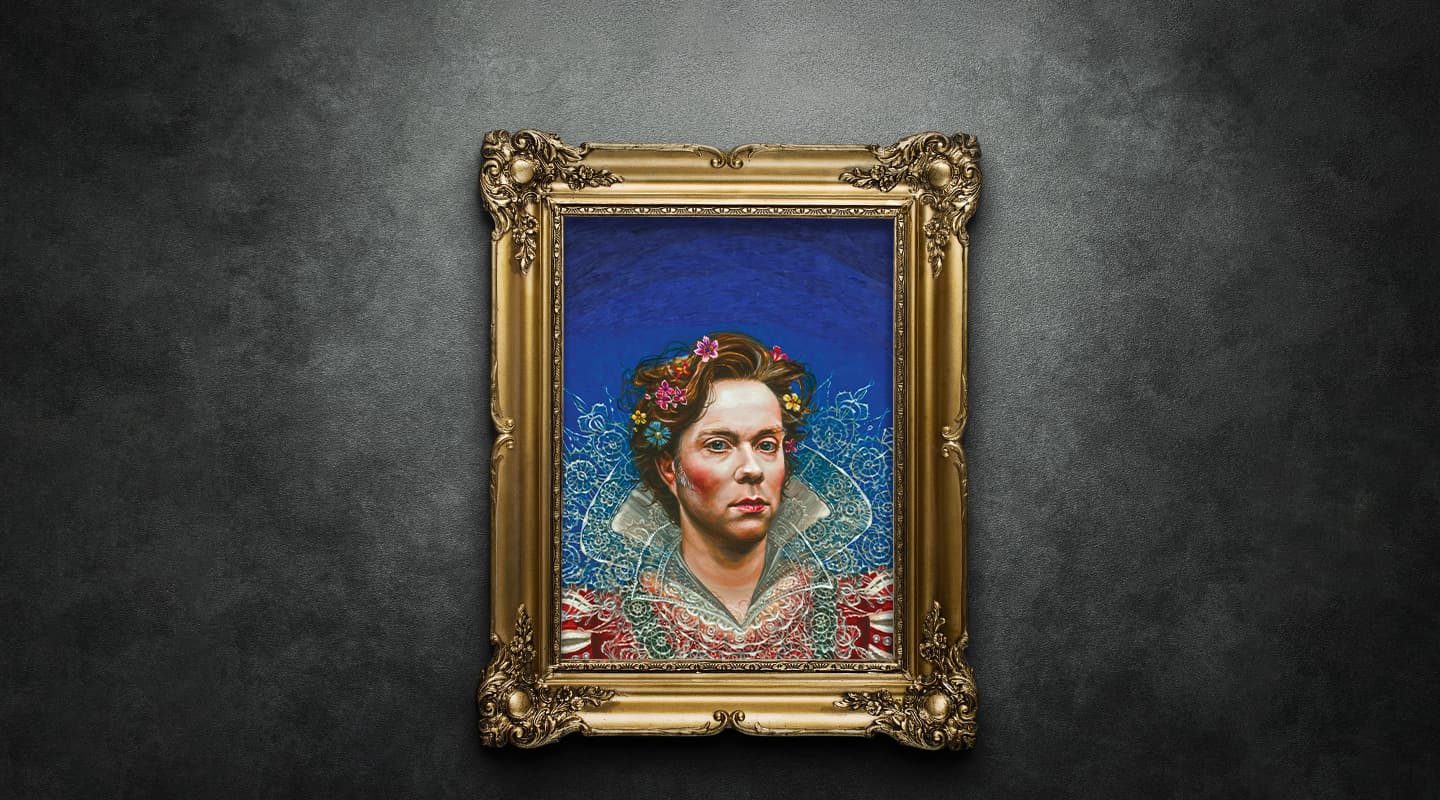
A Tale Of Two Maestros & The Bard
Rufus Wainwright has never been one to settle on any style, but lately he’s been obsessed with one particular artist, Shakespeare. Maestro Marcus de Vries helped Wainwright pull together a diverse tribute to the bard for his 400th birthday.
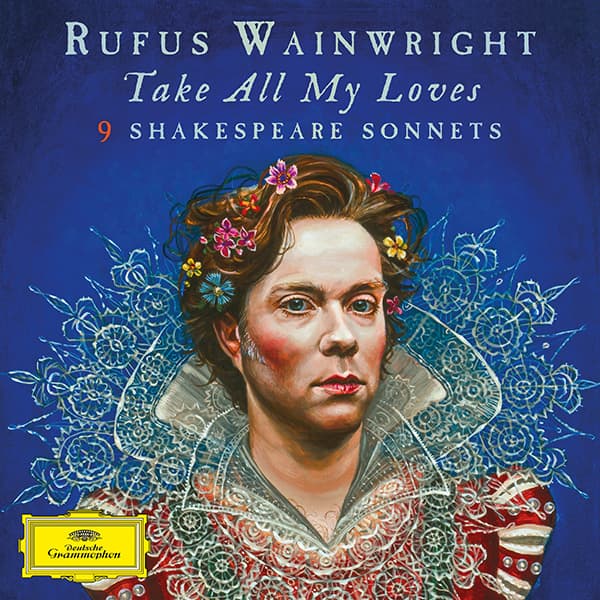
Artist: Rufus Wainwright
Album: Take All My Loves, 9 Shakespeare Sonnets
As the son of folk-music luminaries Kate McGarrigle and Loudon Wainwright III, Rufus Wainwright was expected to carry on the family business. However, the last thing Wainwright junior wanted to do was pigeonhole himself as just a folk artist. Over the years he’s wilfully dived off any stylistic cliff into genres like cabaret, music hall, Broadway musical, Tin Pan Alley, jazz, Sinatra crooning, occasionally diverting into the slightly more obvious options of pop, rock, and yes, even folk. Wainwright’s musical output has been anything but static. Lately, however, he’s become obsessed with Shakespeare.
It all started out relatively innocuously with an invitation by avant-garde director Robert Wilson and the Berliner Ensemble to set a number of Shakespeare’s sonnets to music. It was for a theatrical performance called Shakespeare Sonnets which premiered in Berlin in 2009. A year later, the San Francisco Symphony jumped on board the Shakespeare train and commissioned Wainwright to orchestrate five of those same sonnets.
Getting further mileage out of the bard’s work, three of the sonnets found their way in adapted form to Wainwright’s piano/vocal album All Days Are Nights: Songs for Lulu in 2010. Five years later — following a rock ’n’ roll-influenced outing, Out Of The Game and Wainwright’s first opera, Prima Donna, released on the hyper-prestigious classical music label, Deutsche Grammophon — Wainwright released Take All My Loves, 9 Shakespeare Sonnets, a full-blown ode to Shakespeare that coincided perfectly with the 400th anniversary of the bard’s birthday.
Sequenced as one whole, multi-faceted work, Take All My Loves compromises 16 tracks. Five of which are the same works he orchestrated for the San Francisco Symphony, but performed by the BBC Symphony Orchestra and sung by soprano Anna Prohaska with Andrew Keener producing.
For the remaining 11 — where it gets even more interesting — Wainwright worked with Marius de Vries, who — like Wainwright — has made the transition from the world of pop and rock to classical music maestro. The 11 tracks include six brief sonnet recitations by the likes of Carrie Fisher, Helena Bonham-Carter, William Shatner and others, with backdrops provided by de Vries and his son Ben. One major non-orchestral, German language track was recorded in Berlin while de Vries was busy in LA. The remaining four songs are the title track, which is propelled by electronic drums and a heavy bass line, and has minimalist piano and scores of vocals; Unperfect Actor, a Velvet Underground-like, heavy guitar outing; an elegant pop song sung by Florence Welch called When in Disgrace with Fortune and Men’s Eyes; and a delicate, moody ballad, A Woman’s Face. It sounds like a crazy mishmash, but the overall effect, including the orchestral tracks, is a knock-out.
GETTING THE PICTURE
“It’s good, isn’t it?”, enthused de Vries the moment I connected with him in his LA-based Berry Drive home studio. He carried on to explain that it was “a funny” album to make for him, because he’s been “so deep into movie music during the last five years. This is the first non-movie project I’ve done for a while.” He ruefully acknowledged there’s more money in movie music these days than in his old metier of crafting avant-garde pop. “It’s interesting to go back into the studio without a picture in front of me,” he added. “I do it for the love of it, nowadays. The people I do music-only projects with are old friends, or they do something that’s profoundly, creatively interesting to me. Both were the case with Rufus’ Shakespeare album.”
Take All My Loves’s blend of genres, moods, instruments and instrumental colours was “profoundly and creatively interesting” to work on, said de Vries. As were those sonnets, which have been the bane of quite a few English students. “Yes, the sonnets are hard to understand,” empathised de Vries, “but they’re easy to feel when spoken or performed. You can get the benefit of them without understanding every word. The truism is you can’t really sing poetry, because it has its own internal rhythm and melody, but Rufus is a profoundly gifted lyricist, and he has found ways in all sorts of different styles to make extremely complicated wordplay work with music. The compositions he had come up with in this case were so deep and interesting they made my job as a producer easy.”
Wainwright made contact with him at the end of 2015, during a break in de Vries’ work on the feature movie Lalaland. According to de Vries, “We had some scores and string recordings from the Berlin performance in 2009, which we incorporated later. But as a first step, Rufus came in and played me the music on piano or guitar with a scratch vocal. I recorded that in Logic and built drums and sounds around that. He’d say, ‘I like that,’ or ‘I don’t like that.’
“We worked really quickly. The sketches for every single one of these four tracks came together in a day, then we dressed them up with real instruments. Although we tried to settle on the tonal language, I realised the whole thing was so eclectic there was no point trying to turn it into one piece of cloth. The album was to become a journey with so many twists and turns, so we decided at a very early stage not to be frightened of that. In the end I think it’s what really makes it work.”


DEMO DRIVE TO IGLOO
This first demo stage took place with the two holed up in de Vries’ Berry Drive one-room project studio. “I work in Logic most of the time, using an Apogee Quartet and Focusrite Liquid for I/O, and KRK VXT8 monitors,” outlined de Vries. “I use my own EXS24 sample library for many of the sounds, particularly drums, which I program beat by beat. I’m also a big fan of the U-He synths, particularly the Zebra and Ace. The Box has become very good now, it really has, but I continue to do a lot of stuff outside it. I still love my ARP 2600, my EMS VCS3, and the MiniMoog Voyager. The tactile feel I get from touching my old synths is still very important to me. My main keyboard is the 88-key Korg Kronos, because it has a lovely feel. It also has a good array of controllers in it, which allow me to tell Logic what to do. I’ve also been really getting into the Roli Seaboard Grand, which I used on the title track of Rufus’ album. It has rejuvenated my interest in playing technique.”
In addition to de Vries’ work, additional drum and percussion programming was performed by Eldad Guetta and Ben de Vries at his father’s Hanway Place studio in Soho, London. The next stage of the project was for de Vries and Wainwright to go and record some of those “real instruments,” which was done at Igloo Music, a large facility in LA with four main studios and several additional editing suites. Igloo is unique in that it specialises in both music and film work, and employs a whopping six full-time engineers. One of those engineers is Nicholai Baxter, whom de Vries first worked with on the film Sucker Punch. Baxter has won three Grammy Awards, divides his time 50/50 between music and film work, and also works independently. He engineered and later mixed the tracks de Vries had been involved in.
Drummer Gary Novak, bassist Chris Chaney, and guitarist Joel Shearer were all recorded at Igloo. “We did everything crazily fast,” recalled de Vries. “Rufus had spent 10 years in preparation and we spent maybe just three or four weeks pulling it all together. We got some really great musicians in, and a fantastic engineer, and it was done before we knew it. We set up Igloo initially for Unperfect Actor, and started by recording Gary. Joel’s guitar parts were born out of a guitar arrangement created by Dom Bouffard in Berlin in 2009, and we also used some of Dom’s parts. The idea of this repetitive, Velvet Underground-type guitar riff on one chord was already there. Joel really went for it — his hands were bleeding by the end of that session! After that we overdubbed the bass.
“The song Unperfect Actor was our main focus,” confirmed Baxter, “and we wanted it to have a gritty, driving sound. After we had recorded the drums, bass and guitars for it, we backed off the compression and distortion for the overdubs on the other three songs. Unperfect Actor was the hardest to get right, both in terms of recording and mixing, because it’s so cyclical and drone-like. To keep it interesting we had to get the drums and the guitars to build in just the right way. It grows and grows until it peaks and releases into this very gratifying tonal shift. That took a few takes, but we got it right at the end of the day.
“For the drums I mostly used a Neve Kelso 12-channel sidecar, which has awesome pres with lots of character that compress things on the way in. I used a rock miking setup, with many ribbon mics for a fatter, grittier sound. I had 4038s for overheads, the majority of the drum sound came from them, a Neumann M49 as a mono kit mic, two Royer 121 room mics, and an RCA 44 which I really drove through the Kelso pres and used as a trash mic. I also had a Chandler compressor and Distressors on the room mics. I had an Electro-Voice RE20 on the bass cabinet, going into an Avalon 737 and a Teletronix LA2. On the guitar cabinets I had Shure SM57s going into Neve 1073s, and then into Distressors.”
William Shatner is my neighbour, so I just walked up the hill and asked him! We recorded Carrie Fisher in her bedroom when she had a day off from Star Wars
MIXING TAKE ALL MY LOVES
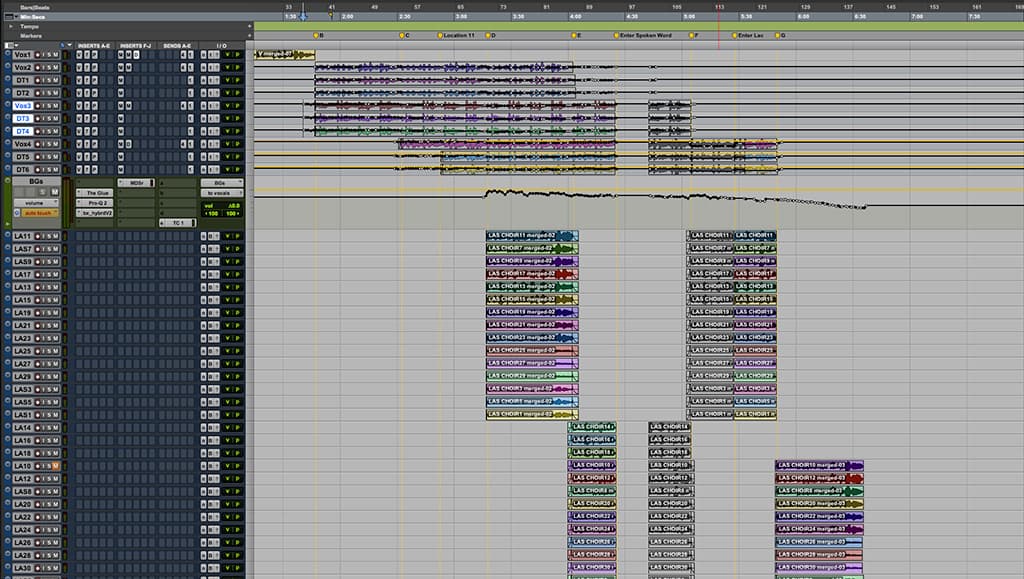

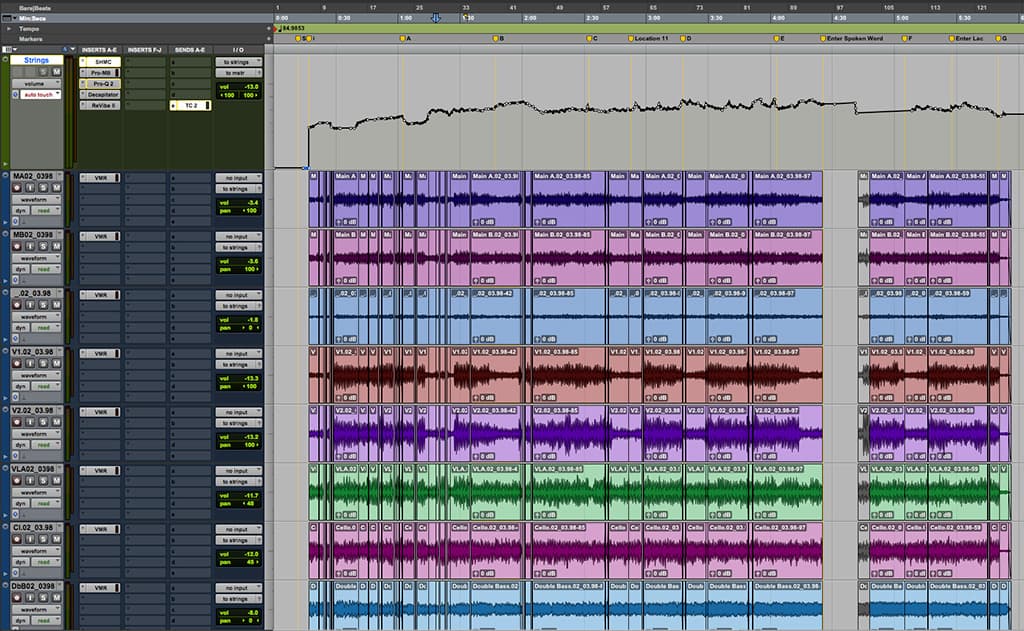

PULLING A FEW STRINGS
The final production stages on three of the four main songs was inserting the strings which had been recorded in Berlin seven years earlier, then adding vocals. “We retrofitted the old recordings to our tracks,” explained de Vries. “I had also added sampled strings, so the live strings had to fit with those as well. The exact nature of the string sections varied from track to track, with some being larger than others. We had to do quite a bit of clever editing without using elastic audio as it changes the sound too much. In some cases we had to change the pitches of some of the notes; it’s amazing what you can do with Melodyne these days!”
The sonnet sung by Florence Welch didn’t have any strings, but de Vries recalled other challenges: “Rufus had persuaded Florence to sing the song and they found one day in London when she could. There was some frantic back and forth across the Atlantic as to what key she wanted to sing it in. In the end we recorded the song in four different keys, with Rufus doing guide vocals that were way out of his range. He sounded like this weird baritone Rufus! Florence chose the key, and then she went in and recorded the song, only for them to realise they had set the sampling frequency wrong: they had recorded her in 48k rather than 44.1k, so she was more than a semitone out of tune. She had to go back in and sing it again, and she nailed it. At the very end of the recording process I recorded Rufus’ final vocals at my place, using my favourite black Neumann U87, going through an Avalon VT737SP, without compression. It’s my tried and tested vocal chain. With people who can really perform, the vocal chain is always very simple!”
TALENT ROUND UP
Other noteworthy production aspects of the four main songs include an epic crackle in A Woman’s Face and what sounds like telephone sounds on Take All My Love. De Vries elaborated on the why and how: “Ha, that crackle is pretty prominent! It’s from an old break beat from my ’90s sample collection I used to get the song going. I can’t shed my ’90s habits, in particular my Massive Attack habit! What sounds like a telephone sound on the title track is just me messing around with the ARP 2600, adding an introductory tone that seemed to work for the song. With a song like that, which is very drone-like and repetitive, you need a kind of signature sound to get people used to that language and draw it together. I also programmed the drums, with a contribution from Eldad, and played that swooping melody in the intro on the Roli keyboard. Other than Chris’s bass overdub that track is almost only Rufus and myself.”
At the end of Take All My Love, de Vries also reads the sonnet. It was part of a late decision to intersperse the main music tracks with brief sonnet recitations, and in two cases — Unperfect Actor was the other — integrate the recitations into the songs themselves. “I’m very uncomfortable hearing my own voice full frequency,” admitted de Vries. “So I used the AudioEase Speakerphone plug-in on the Bakelite preset.
“We arrived late at the spoken word idea, but it turned out to be crucial to the record, because it gives some punctuation between the many different styles. The people who did the recitations were whoever was around at the time. William Shatner is my neighbour, so I just walked up the hill and asked him! Funnily enough he wanted to do it at his office on Ventura Blvd, where there’s a lot of traffic. I recorded him with a handheld Roland recorder, and when we got home we realised the audio was compromised. His recitation was great, so I suggested to Ben to filter it and chop it up and make some dramatic spaces and add some echo and abstract sounds. Rufus stayed with Carrie Fisher for a while, and we recorded in her bedroom when she had a day off from Star Wars. Helena Bonham-Carter is a friend of Rufus, she was recorded by Ben at my house in London. Ben and I added textures behind some of these recitations because we wanted something a bit more abstract and musical. It sounded too brutal to have just spoken word in between the music pieces.”
My tried and tested vocal chain is my favourite black Neumann U87, going through an Avalon VT737SP, without compression. With people who can really perform, the vocal chain is always very simple!


SONNETS IN SEQUENCE
By far the most difficult task of the entire project was sequencing then mastering 16 tracks of material that are outrageously diverse, not only in terms of musical styles and sonic colours, but also in dynamic range. Before that stage there was still the small matter of mixing the four main tracks de Vries and Wainwright had collaborated on. During the recording stage, people had worked on material in LA, London, and Montreal (where Martha Wainwright was recorded at her brother’s Mayk Music studio). Then in LA, de Vries loaded everything back into the Logic sessions for editing, comping, occasionally tuning vocals and doing rough mixes. The next stage was for him to convert the sessions to Pro Tools and send them to Nicholai Baxter at Igloo.
“I started the mixes on my own in my room, Studio D,” recalled Baxter. “Then Marius and Rufus came in and we dug into the details together. Rufus had a very specific vision for the way he wanted each track to hit you. He did not want any half measures. If a song was intended to be dissonant and aggressive, we went for it full force, and if a song was intended to be mellow, we went 100% in that direction. I used an Avid Icon D-Control during the mixes, which helps with workflow. The custom fader banks and ability to grab knobs makes things quicker.
“There’s tons of automation in the sessions, especially in Take All My Loves and Unperfect Actor. In Take All My Loves the vocals are becoming more dense throughout, and it took a long time to get right. We needed to preserve our focal point while maintaining the song’s momentum. There was also a cacophony of background vocals entering and exiting. Unperfect Actor was difficult to mix, because of its shape and dissonance. While mixing I needed to have certain dissonant sections on loop for hours, and that became quite challenging. There are minor and major tonalities rubbing against each other for long stretches in that song! We also did some additional overdubs during mixing. Rufus added some vocals using a Neumann M149, and I added an acoustic guitar recorded with an AEA N8 ribbon. There wasn’t much mixing to be done on the spoken word tracks, as Rufus wanted them really raw.
“After the mixes, we spent a long time sequencing and levelling the record, and making sure we had the just right spacing between tracks. It involved many passes of listening to the whole record all the way through then making tweaks. We were all adamant about maintaining the enormous dynamic range of the record. It would not have worked had we crushed it. The record needs to breathe, so the loud sections can have the impact they are intended to have. It was a thrill for me to work on this project for this reason alone, to know the fidelity would be maintained through mastering, which was done by Eric Boulanger. Sadly the loudness wars are creeping into film work as well, with movies getting louder and limiters being used at the dubbing stage, which was never the case before. Unfortunately, it’s starting to become fatiguing to listen to feature films as well!”
“The mastering was fantastic on this,” agreed de Vries. “We did a lot of crossfading and Eric really helped draw the album’s many disparate elements together. The album is a significant achievement and is already finding an audience. People respond to it and spread the word. Meanwhile, Rufus is just carrying on doing what he does, as am I. I’m back on the Lalaland project, and later this year I’ll be in London working with Chrissie Hynde on an orchestral jazz dub album. For now I’m just thankful I’ve been able to contribute to another Rufus Wainwright record!”





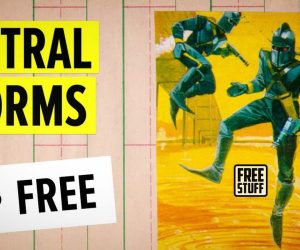
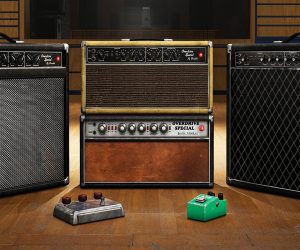


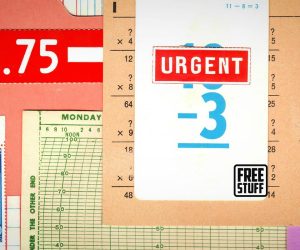
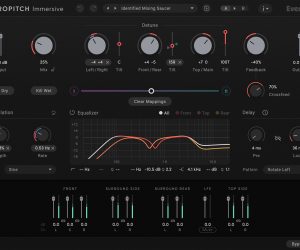
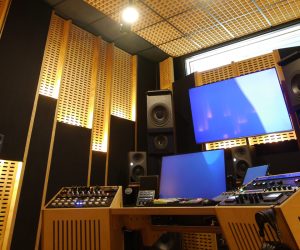
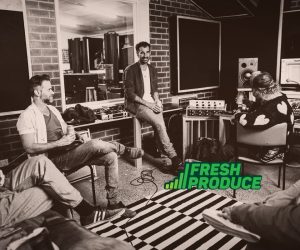



RESPONSES